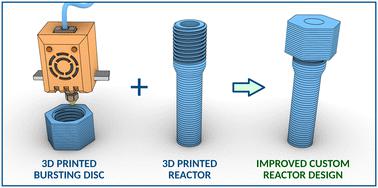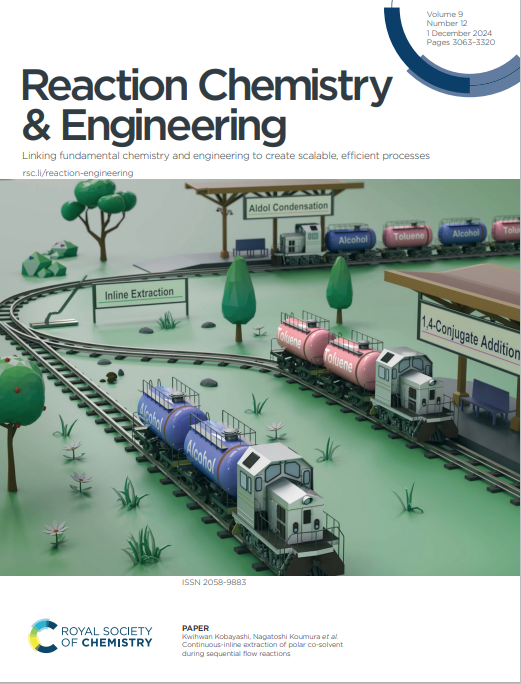用于液相/气相混合化学安全有机合成的 3D 打印技术
IF 3.4
3区 化学
Q2 CHEMISTRY, MULTIDISCIPLINARY
引用次数: 0
摘要
在化学实验室中使用液相/气相系统是一项重要但困难的基本操作,这主要是由于传统实验室设备存在爆炸风险。这些系统如果操作不当或遭到破坏,可能会对研究人员造成重大威胁。为了应对这一挑战,我们的工作探索了添加剂技术,特别是熔融长丝制造(FFF)在改善实验室安全方面的潜力。我们已成功利用 FFF 生产出紧凑型安全模块,包括集成爆破片,这些模块可根据需求轻松制造,并适用于各种类型的反应设置。与传统玻璃器皿相比,这些模块与实验室反应器集成后,可显著提高操作安全性。我们的研究强调,在内部压力过大的情况下,3D 打印反应器部件会发生分层和壁裂,这种机制明显避免了整个反应容器产生危险碎片。这项研究证明了加成制造反应器在使用乙炔、二氧化碳和氢气等多种气体进行有机合成时的效率和安全性。我们在乙烯基化和叠氮烷烃环加成反应中对这些反应器进行了系统测试。我们的研究结果证实,3D 打印反应器不仅能提高加压操作的安全性,还能保持操作效率。所讨论的方法为在实验室环境中更安全、更有效地处理气态试剂提供了一种变革性的解决方案,标志着在灵活的反应器设计和化学实验室安全实践方面取得了重大进展。本文章由计算机程序翻译,如有差异,请以英文原文为准。

3D printing for safe organic synthesis in mixed liquid/gas-phase chemistry
Working with liquid/gas-phase systems in chemical laboratories is a fundamentally important but difficult operation, mainly due to the explosion risk associated with conventional laboratory equipment. Such systems, in the case of improper operation or destruction, may pose a significant threat to researchers. To address this challenge, our work explores the potential of additive technologies, particularly fused filament fabrication (FFF), for improving laboratory safety. We have successfully utilized FFF to produce compact safety modules, including integrated bursting discs, which can be easily made on demand and adapted to various types of reaction setups. Compared with traditional glassware, these modules, when integrated with laboratory reactors, significantly enhance operational safety. Our research highlights that in the event of excessive internal pressure, 3D-printed reactor parts undergo delamination and cracking of the wall, a mechanism that notably avoids the creation of hazardous fragments from the whole reaction vessel. This study demonstrated the efficiency and safety of additively manufactured reactors in organic synthesis using a variety of gases, including acetylene, carbon dioxide, and hydrogen. We systematically tested these reactors in vinylation and azide–alkyne cycloaddition reactions. Our findings confirm that 3D-printed reactors not only provide increased safety during pressurized operations but also maintain operational efficiency. The discussed approach offers a transformative solution for safer and more effective handling of gaseous reagents in laboratory settings, marking a significant advancement in flexible reactor design and chemical laboratory safety practices.
求助全文
通过发布文献求助,成功后即可免费获取论文全文。
去求助
来源期刊

Reaction Chemistry & Engineering
Chemistry-Chemistry (miscellaneous)
CiteScore
6.60
自引率
7.70%
发文量
227
期刊介绍:
Reaction Chemistry & Engineering is a new journal reporting cutting edge research into all aspects of making molecules for the benefit of fundamental research, applied processes and wider society.
From fundamental, molecular-level chemistry to large scale chemical production, Reaction Chemistry & Engineering brings together communities of chemists and chemical engineers working to ensure the crucial role of reaction chemistry in today’s world.
 求助内容:
求助内容: 应助结果提醒方式:
应助结果提醒方式:


